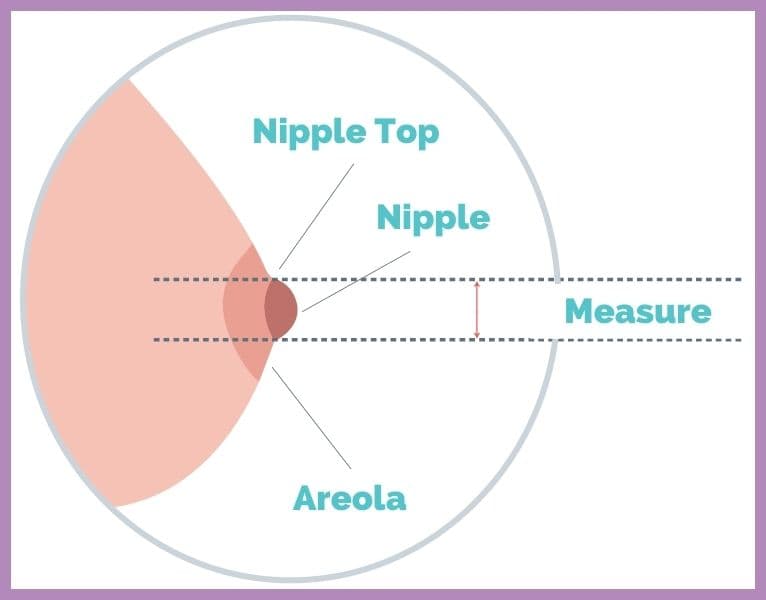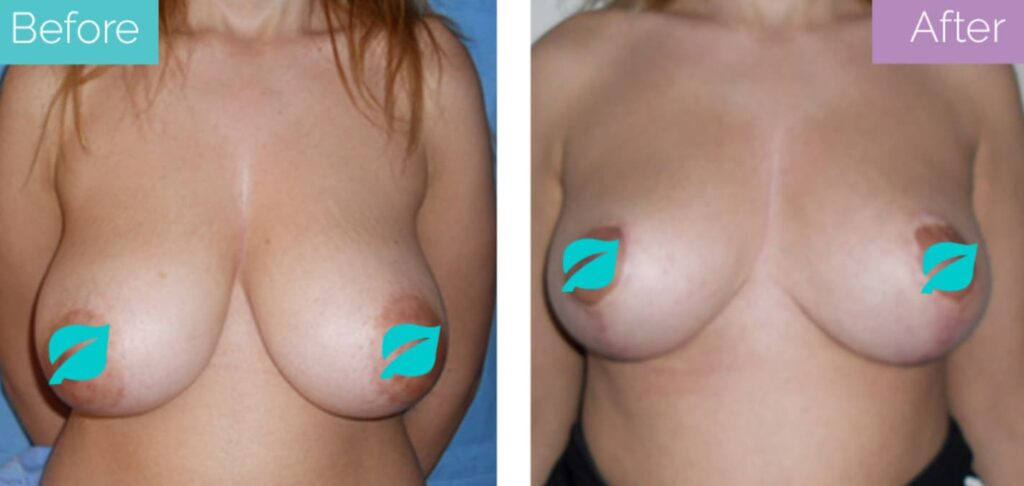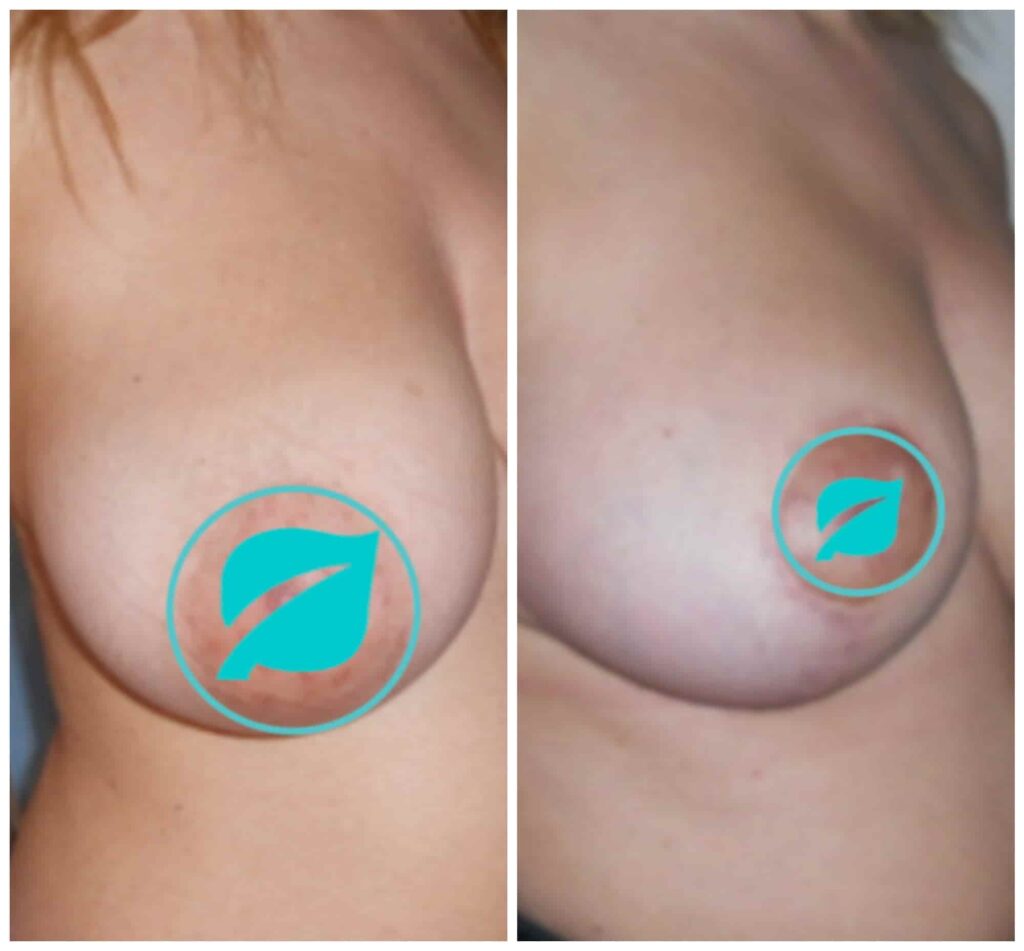Areola reduction is a cosmetic surgery that can reshape and resize the areola – dark, pigmented skin around the nipples.
They can have all kinds of shapes, sizes and colours, but not everyone is always comfortable with how their areolas look. Their asymmetry can also cause aesthetic concerns. But these can be taken care of with an areola reduction.
It is common, however, for people to worry about potential complications before getting this surgery, especially related to breastfeeding, scarring, and sensitivity.
These are all valid concerns which is why you should learn more about this procedure before you undergo it.
Can You Get An Areola Reduction?
To be clear, both men and women can get areola reduction surgery. It can be done on its own or combined with other breast surgeries like reduction/gynecomastia or lift. The last one is more common.

Keep in mind that, on average, the size of the areola is 4 cm, but it can, of course, vary. Some people have areolas that are around 10 cm.
It’s possible for the size of your areolas to change over time due to:
- Ageing
- Hormonal fluctuations (puberty, menstruation, pregnancy, menopause, etc.)
- Weight changes
But before that, it’s your genetics that determine how large your areola is going to get. Depending on the dimensions of your breasts, it may not always stand out too much.
There are, however, instances in which an individual’s areola occupies most of the breast tip. It is especially true for those with tubular breasts.
On smaller breasts, wide areolas can look disproportionately large as well. Another reason why people feel unhappy with their areolas is if their sizes and shapes differ. But all these issues can be fixed with an areola reduction.
How Much Does Areola Reduction Cost?
Areola reductions cost an average of £4,000 in the UK. However, the price can vary depending on the credentials of your surgeon and the location of the clinic.
Additionally, the type of anaesthesia, complexity and extent (one or both areolas) of the procedure will affect the overall cost.
Keep in mind that areola reduction is a cosmetic procedure, so it won’t be available on the NHS. You’ll have to get it privately, and pre-op consultations can also cost £100 to £200.
After the surgery, you’ll have to account for the follow-up appointments and medication as well.
If you are, however, looking to get this surgery at a lower price, you can consider medical tourism. In Turkey, for instance, you can get an areola reduction for around £1,500 combined with breast surgery.

The surgery can be very high-quality (in the hands of the right surgeon). But the cost is low because of currency exchange and the low cost of living.
How Does Areola Reduction Work?
For your areola reduction, your surgeon will give you general anaesthesia.
After the anaesthesia is administered, your surgeon will make an incision around the new and old edges of the areola (like a doughnut).
The strip of skin in between will be removed. However, if you want to lift your areola a little, your surgeon will remove a little more skin from the top.
Following that, your surgeon will perform a purse-string suture. This will essentially close the gap between the edges of your skin and your areola.
After the distance between the edges is closed, your surgeon will place more sutures to close the wound entirely. With this surgery, it’s possible to bring down the size of the areola to 3-4 cm.

It should be noted that there’s a limit to how much the areola can be shrunk. If too much skin is removed, it can result in bad scarring.
Your surgeon will take your aesthetic goals into consideration, but the anatomy and proportions of your breast also carry weight when determining areola size.
Who’s A Suitable Candidate For Areola Reduction Surgery?
You might be a suitable candidate for areola reduction if:
- You’ve achieved your ideal weight.
- You have wide, puffy, and/or asymmetrical areolas.
- Your breasts have stopped growing (usually 18 years).
- You don’t plan to have children in the future.
Other than that, it’s also important for you to be in good health before you come in for your surgery.
Can You Breastfeed After Areola Reduction?
Rarely areola reduction can affect your ability to breastfeed after surgery. It’s one of the risks of getting this surgery.
Your ability to breastfeed might be reduced, or you might not be able to breastfeed. This can happen if your milk ducts are damaged during the surgery.
That’s why you might be advised to wait until you’re done breastfeeding.
Does Areola Reduction Leave Scars?
Your areola reduction scar should fade in about 1 year.
Still, there’s a risk of scarring with this surgery as well. You may be able to minimise it by finding an experienced and board-certified professional.

On your end, make sure to follow your surgeon’s aftercare instructions. If there’s a problem during recovery and your healing is delayed, that might also worsen scarring.
Do You Lose Sensitivity After Areola Reduction?
Loss of sensation can occur after an areola reduction. However, it’s not always permanent.
Your sensation can return while you’re healing from the surgery. Although, rarely, loss of sensitivity can be permanent.
How Long Does Areola Reduction Take To Heal?
After an areola reduction, you should be able to get back to work after 1-2 days. But while you’re recovering, you can experience the following side effects temporarily:
- Swelling
- Numbness
- Pain
- Soreness
- Discomfort
- Bruising
It should get better after about 1.5 months, but because the scar will take some time to fade, you will see the final results after 1 year.
Make sure to take your prescribed medications. You might also be given a compression garment to wear for a few weeks.
In the meantime, don’t sleep on your back or engage in any strenuous activities until you’re cleared by your surgeon.
Is Areola Reduction Permanent?
The results of an areola reduction surgery are permanent.
However, even after surgery, your areolas can grow back as a result of hormonal fluctuations and weight changes.
In the case of the latter, if you’ve lost significant weight, your areolas won’t shrink because of the stretching of the skin.
Ageing also reduces skin elasticity, so that can also make sure your areolas look bigger.
Still, it’s likely that your areolas will look smaller than they would have without the surgery.
What Are The Pros & Cons Of Getting An Areola Reduction?
One of the biggest pros of areola reduction is that it can change the shape and size of your areolas however you like. And that can help you feel more confident in your skin.
The surgery also gives permanent results, and when the scars heal properly, you won’t be able to tell that they’re there.
The cons, on the other hand, mostly have to do with the complications that can occur as a result of the surgery.
Like all surgical procedures, areola reduction also carries certain risks like infection, bruising, scarring, loss of sensation, and problems with breastfeeding, among others.
However, with the right surgeon and by following your surgeon’s advice, you may be able to minimise these risks and recover normally.
Conclusion
Areola reduction is a cosmetic surgery that can significantly reduce the size of the pigmented skin around your nipple. You can also combine this cosmetic surgery with breast and nipple surgeries.
Done right, it can give you excellent results. This is why it’s important to find a board-certified specialist who’s experienced in performing this surgery. They’ll prepare the right treatment plan for you based on your treatment goals.
Reviewed and approved by Prof Dr Fuat Yuksel
FAQ
Does breast reduction reduce areola?
During a breast reduction, the size of the areola is usually made smaller by cutting off the excess skin. It’s also likely to be repositioned.
Can I reduce the areola size naturally?
There is no way to naturally reduce the size of your areolas. An areola reduction surgery is the most effective treatment option.
Can you get an areola reduction on the NHS?
Since areola reduction is considered a cosmetic procedure, you’re unlikely to get it on the NHS.
Is areola reduction risky?
Areola reduction is a safe surgery in the hands of a qualified surgeon. Still, like all surgeries, it comes with some risks.
How painful is an areola reduction?
Areola reduction surgery takes place under anaesthesia, so it’s not painful. After the surgery, you can feel pain for which a painkiller may be prescribed by your surgeon.




